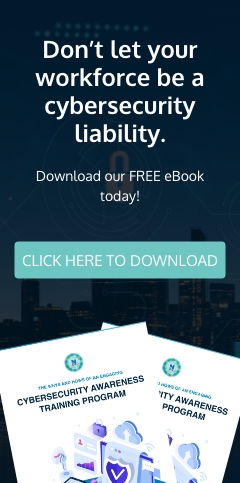In today's fast-paced and unpredictable business landscape, it's more important than ever for companies to be prepared for the unexpected. Otherwise, they may struggle to get back on their feet and suffer the financial consequences of downtime. This is where a business continuity plan (BCP) comes in handy.
What is a business continuity plan?
A BCP outlines the steps an organization will take to stay operational in the event of an unexpected disruption caused by hardware failures, power outages, cyberattacks, natural disasters, or pandemics, among others. It enables businesses to minimize the duration and cost of downtime as well as keep their employees, data and IT systems, and physical assets safe and secure during a crisis.
Read also: Advantages of cloud-based business continuity planning
How can companies craft a strong business continuity plan?
You can create a sound business continuity plan by following these tips:
Build a business continuity management team
A business continuity management team is a group of individuals within a company who are responsible for developing, implementing, and overseeing the BCP. The team should be composed of employees from different departments, such as IT, human resources, operations, and legal, who can work collaboratively to ensure that the company is prepared to respond to any disruption.
Identify potential risks and assess the impact of each risk
List down all the possible natural and human-made disasters that your business is likely to face. For example, businesses in Baltimore must be prepared for the natural hazards that commonly affect the city, including flooding, extreme heat, and thunderstorms. They also need to prepare for power outages and cyberattacks.
Next, determine the physical, operational, and financial risks that your business may face as a result of each disaster. You need to identify the business functions, key personnel, and important resources that would be affected so you can assess the impact that each risk could have on your business. This will allow you to decide which risks need to be addressed first and allocate resources accordingly.
Develop response strategies
Create detailed plans to mitigate each risk you’ve identified. Such mitigating measures could include developing alternative work locations, creating backup systems for critical data and applications, and establishing communication protocols for employees, customers, and other stakeholders.
Test the plan
To ensure your plan’s effectiveness, you need to test it regularly by conducting simulations, tabletop exercises, and dry runs. This will allow you to identify any weaknesses or gaps in your plan and make the necessary updates to address these.
Review and update the plan
Since business conditions and other factors that impact your operations can change, you need to regularly review and update your BCP. Conduct a review at least once a year and whenever there are significant changes to your business, such as:
- Changes in personnel: If a member of your business continuity management team leaves the company, you may need to add new people to the team and make the necessary changes to each member’s roles and responsibilities.
- Changes in business processes: Whenever your company introduces new products and services, or makes significant changes to your existing processes, you need to review your BCP to ensure that critical business functions are adequately covered.
- Changes in technology: If your organization adopts new technologies or changes its IT infrastructure, your BCP should be updated to ensure that critical data and applications are adequately protected and can be restored in the event of a disruption.
NetQuest offers business continuity planning and disaster recovery solutions, including off-site storage services, hard drive and computer backup, virtual data recovery, and more. We can customize a comprehensive solution for you so you can rest easy knowing that your business will survive any disruption. Book a FREE consultation with us today.


